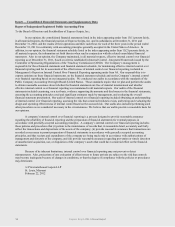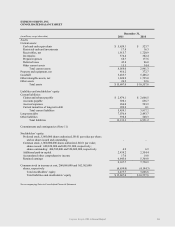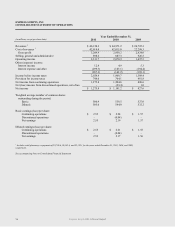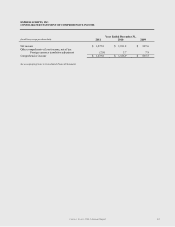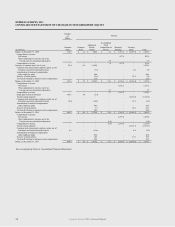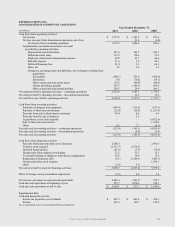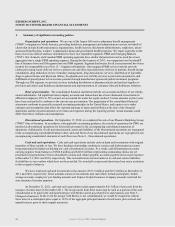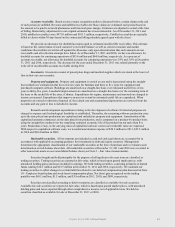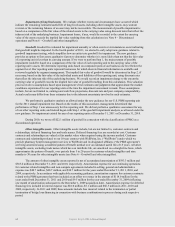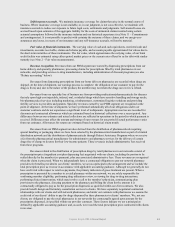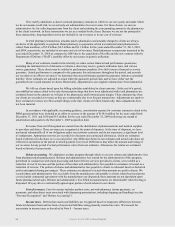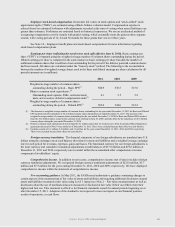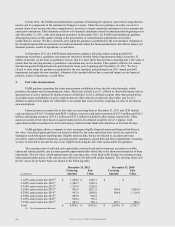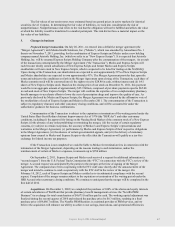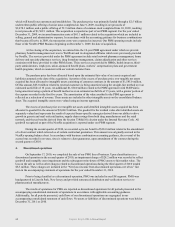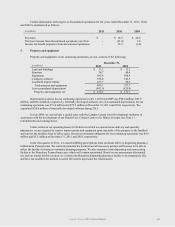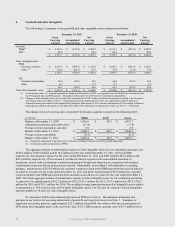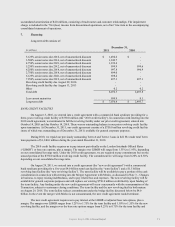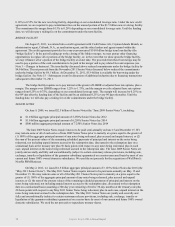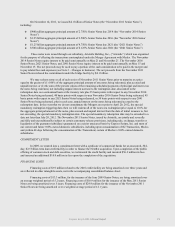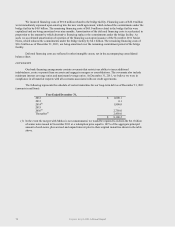Express Scripts 2011 Annual Report Download - page 66
Download and view the complete annual report
Please find page 66 of the 2011 Express Scripts annual report below. You can navigate through the pages in the report by either clicking on the pages listed below, or by using the keyword search tool below to find specific information within the annual report.
Express Scripts 2011 Annual Report
64
If we merely administer a client’s network pharmacy contracts to which we are not a party and under which
we do not assume credit risk, we record only our administrative fees as revenue. For these clients, we earn an
administrative fee for collecting payments from the client and remitting the corresponding amount to the pharmacies
in the client’s network. In these transactions we act as a conduit for the client. Because we are not the principal in
these transactions, drug ingredient cost is not included in our revenues or in our cost of revenues.
In retail pharmacy transactions, amounts paid to pharmacies and amounts charged to clients are always
exclusive of the applicable co-payment. Retail pharmacy co-payments, which we instructed retail pharmacies to
collect from members, of $5.8 billion, $6.2 billion and $3.1 billion for the years ended December 31, 2011, 2010,
and 2009, respectively, are included in revenues and cost of revenues. Retail pharmacy co-payments increased in the
year ended December 31, 2010 as compared to 2009 due to the acquisition of NextRx and the new contract with the
Department of Defense (―DoD‖), partially offset by an increase in generic utilization.
Many of our contracts contain terms whereby we make certain financial and performance guarantees,
including the minimum level of discounts or rebates a client may receive, generic utilization rates, and various
service guarantees. These clients may be entitled to performance penalties if we fail to meet a financial or service
guarantee. Actual performance is compared to the guarantee for each measure throughout the period, and accruals
are recorded as an offset to revenue if we determine that our performance against the guarantee indicates a potential
liability. These estimates are adjusted to actual when the guarantee period ends, and we have either met the
guaranteed rate or paid amounts to clients. Historically, adjustments to our original estimates have been immaterial.
We bill our clients based upon the billing schedules established in client contracts. At the end of a period,
any unbilled revenues related to the sale of prescription drugs that have been adjudicated with retail pharmacies are
estimated based on the amount we will pay to the pharmacies and historical gross margin. Those amounts due from
our clients are recorded as revenue as they are contractually due to us for past transactions. Adjustments are made to
these estimated revenues to reflect actual billings at the time clients are billed; historically, these adjustments have
not been material.
In accordance with applicable accounting guidance, amortization expense for customer contracts related to the
PBM agreement has been included as an offset to revenue in the amount of $114.0 million for the years ended both
December 31, 2011 and 2010 and $9.5 million for the year ended December 31, 2009 (reflecting one month of
amortization subsequent to the December 1, 2009 acquisition date).
Revenues from our EM segment are earned from the distribution of pharmaceuticals and medical supplies
to providers and clinics. These revenues are recognized at the point of shipment. At the time of shipment, we have
performed substantially all of our obligations under our customer contracts and do not experience a significant level
of reshipments. Appropriate reserves are recorded for discounts and contractual allowances, which are estimated
based on historical collections over a recent period. Any differences between our estimates and actual collections are
reflected in operations in the period in which payment is received. Differences may affect the amount and timing of
our revenues for any period if actual performance varies from our estimates. Allowances for returns are estimated
based on historical return trends.
Rebate accounting. We administer a rebate program through which we receive rebates and administrative fees
from pharmaceutical manufacturers. Rebates and administrative fees earned for the administration of this program,
performed in conjunction with claim processing and home delivery services provided to clients, are recorded as a
reduction of cost of revenue and the portion of the rebate and administrative fees payable to customers is treated as a
reduction of revenue. The portion of rebates and administrative fees payable to clients is estimated based on historical
and/or anticipated sharing percentages. These estimates are adjusted to actual when amounts are paid to clients. We
record rebates and administrative fees receivable from the manufacturer and payable to clients when the prescriptions
covered under contractual agreements with the manufacturers are dispensed; these amounts are not dependent upon
future pharmaceutical sales. Rebates and administrative fees billed to manufacturers are determinable when the drug is
dispensed. We pay all or a contractually agreed upon portion of such rebates to our clients.
Cost of revenues. Cost of revenues includes product costs, network pharmacy claims payments, co-
payments, and other direct costs associated with dispensing prescriptions, including shipping and handling (see also
―Revenue Recognition‖ and ―Rebate Accounting‖).
Income taxes. Deferred tax assets and liabilities are recognized based on temporary differences between
financial statement basis and tax basis of assets and liabilities using presently enacted tax rates. We account for
uncertainty in income taxes as described in Note 8 – Income taxes.


